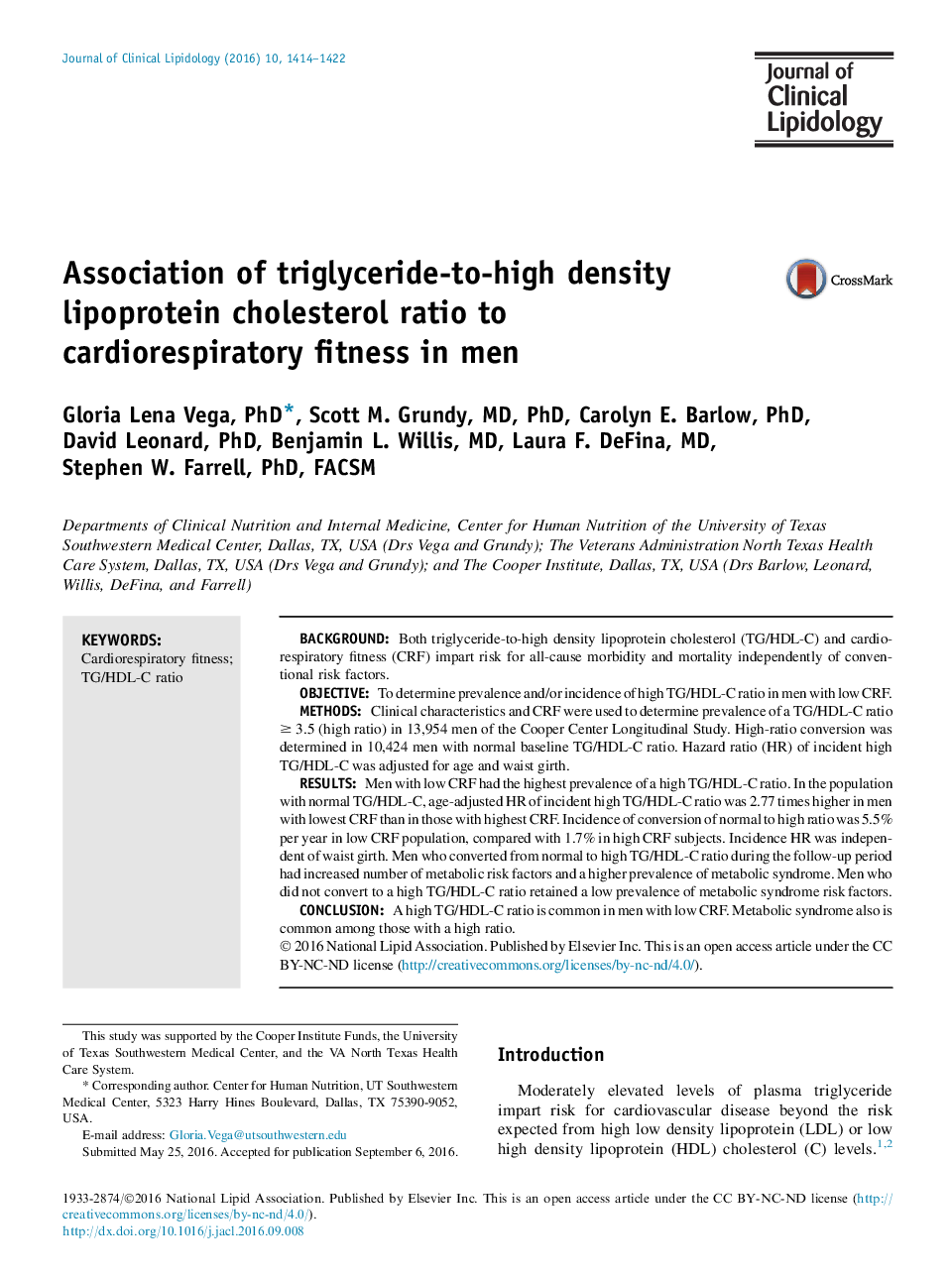| Article ID | Journal | Published Year | Pages | File Type |
|---|---|---|---|---|
| 5985136 | Journal of Clinical Lipidology | 2016 | 10 Pages |
â¢Low cardiorespiratory fitness is associated with high TG/high density lipoprotein (HDL)-C in men.â¢There is a high incidence of TG/HDL-C ⥠3.5 in men with low cardiorespiratory fitness.â¢Metabolic syndrome prevalence is highest in men with incident high TG/HDL-C.
BackgroundBoth triglyceride-to-high density lipoprotein cholesterol (TG/HDL-C) and cardiorespiratory fitness (CRF) impart risk for all-cause morbidity and mortality independently of conventional risk factors.ObjectiveTo determine prevalence and/or incidence of high TG/HDL-C ratio in men with low CRF.MethodsClinical characteristics and CRF were used to determine prevalence of a TG/HDL-C ratio ⥠3.5 (high ratio) in 13,954 men of the Cooper Center Longitudinal Study. High-ratio conversion was determined in 10,424 men with normal baseline TG/HDL-C ratio. Hazard ratio (HR) of incident high TG/HDL-C was adjusted for age and waist girth.ResultsMen with low CRF had the highest prevalence of a high TG/HDL-C ratio. In the population with normal TG/HDL-C, age-adjusted HR of incident high TG/HDL-C ratio was 2.77 times higher in men with lowest CRF than in those with highest CRF. Incidence of conversion of normal to high ratio was 5.5% per year in low CRF population, compared with 1.7% in high CRF subjects. Incidence HR was independent of waist girth. Men who converted from normal to high TG/HDL-C ratio during the follow-up period had increased number of metabolic risk factors and a higher prevalence of metabolic syndrome. Men who did not convert to a high TG/HDL-C ratio retained a low prevalence of metabolic syndrome risk factors.ConclusionA high TG/HDL-C ratio is common in men with low CRF. Metabolic syndrome also is common among those with a high ratio.
